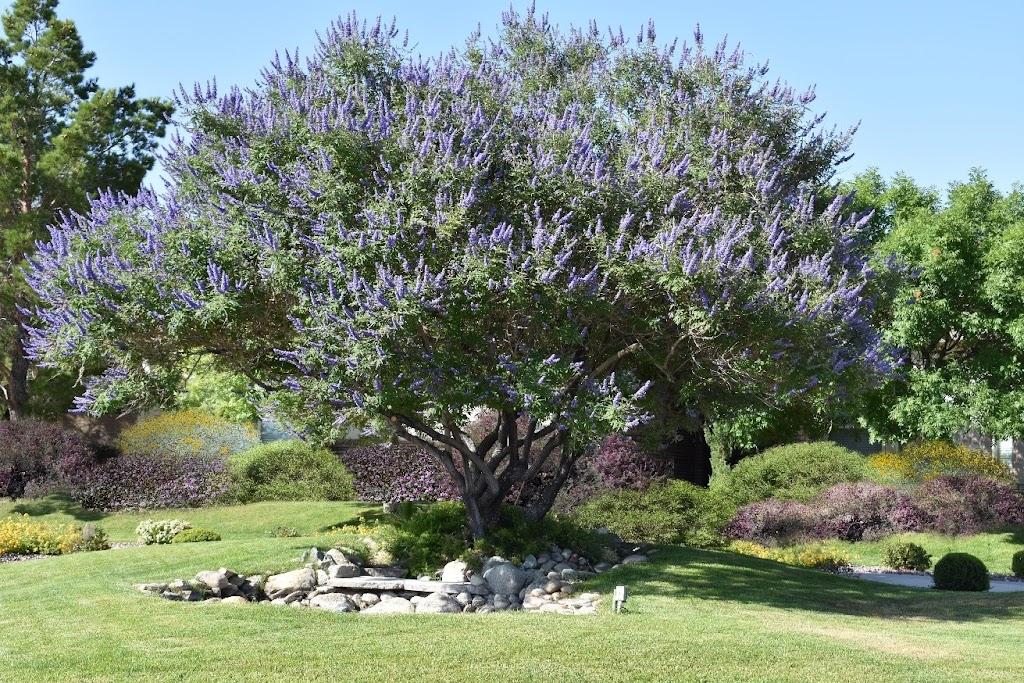Vitex or Monk’s Pepper is Not Xeric but Mesic
Q. Our vitex has done well for over 20 years but it is starting to thin out. What gives? Vitex or Monk’s Pepper tree is mesic in its water use. Similar to oleander, it prefers to grow under mesic conditions (can handle a lawn for instance) but can also handles dry soil, to an extent. It prefers a fruit tree water environment so it can handle a well-drained lawn. A. Hard to get blue flowers anywhere. Well Vitex, or Monk’s pepper, is a mesic tree that can have blue or white flowers. Yes, it is a mesic tree and not from the desert but it still is considered low in its water use. It is from Mediterranean regions like oleander and European olive. But it’s one of those strange “cats” that doesn’t like poorly drained lawns. It can’t handle drainage problems very well. 20 foot tree for the Phoenix area That may be the source of your problem with that tree. If the tree was planted in a low spot and, if all this rain added even more water to this low spot, on top of your irrigations, then water-soaked roots during the heat may be the source of your problem. Summer heat is more of a problem than cold weather regarding rotting roots. Recommendations but be careful planting in the desert, its different I was reading recently that vitex can be a short-lived tree. 20 years was the maximum life it was given in this reference. I don’t know if I agree, but you can winter prune it and extend its life. Trees, particularly small trees like vitex, can have an extended life by heavily pruning it in the winter. Many trees have a “root to shoot” ratio and the new growth will come back like gangbusters until that old root to shoot ratio is reached. Contrasting the information above, adding some compost to the soil at planting time can will make this tree live longer. Don’t be afraid of doing this. Amend the soil with compost at planting, water it like you would any other landscape tree. Prune it so that the trunk shades itself. Lightly fertilize it in the early spring with a fertilizer containing lots of nutrients including nitrogen.
Vitex or Monk’s Pepper is Not Xeric but Mesic Read More »
